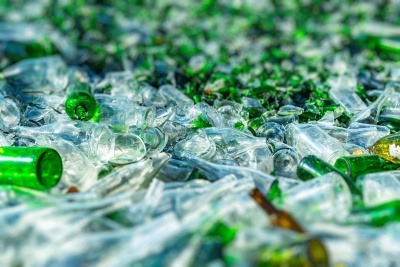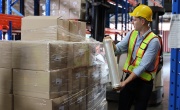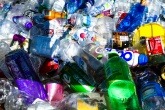Glass recycling reforms require clarity
Tim Gent, Managing Director of glass recycling company Recresco, explains the need for direction on glass recycling reforms to ensure glass stays out of landfill.
 As the climate crisis deepens, consideration for our environment must sit firmly at the forefront of consumer minds and government policy. Taking real action to mitigate our impact on the planet is everyone's responsibility, with reduction of waste, and packaging sustainability being a key consideration. It’s clear we need to make more ethical choices when it comes to packaging design, packaging waste and recycling.
As the climate crisis deepens, consideration for our environment must sit firmly at the forefront of consumer minds and government policy. Taking real action to mitigate our impact on the planet is everyone's responsibility, with reduction of waste, and packaging sustainability being a key consideration. It’s clear we need to make more ethical choices when it comes to packaging design, packaging waste and recycling.
To date, reform of policy around packaging waste management has been plagued with delays and multiple consultations. Extended Producer Responsibility (EPR) for packaging is now expected to be in place by 2025 but it's unlikely this will go ahead without further problems.
The current system has been in place since 1997, so reform is well overdue. The purpose behind the new EPR framework is to reduce waste by moving the full cost of handling packaging waste away from local taxpayers and councils to the packaging producers by applying the ‘polluter pays principle’. The idea being to encourage producers to reduce packaging volume at the manufacturing stage and create more recyclable packaging products. Ultimately, the reforms should help to enforce more sustainable packaging, leading to less waste to landfill, and more to reuse and recycling. The need for reform is clear and the thinking behind the plans makes sense, but implementation has so far proven to be an uphill struggle.
Lack of direction
The constant delays have been a source of great frustration for all involved while the whole process has become chaotic and confusing. The latest in a long line of consultations by the Department for Environment, Food & Rural Affairs (Defra) opened in July and closed on 9th October this year. The aim was to seek views and identify refinements to the draft regulations with feedback expected in the first half of next year.
Meanwhile, the recent 'Simpler Recycling' government announcement has been broadly welcomed by many impacted sectors for providing better direction and reducing confusion around recycling, but it is still far from a perfect solution for all.
For the glass sector, the goal is to ensure any reform helps to drive the greatest possible volume of glass into sustainable use, increase recycling rates and ultimately reduce the amount going to landfill and aggregate. The constant shift in direction, threat of an all-in Deposit Return System (DRS) and confusion around EPR are not only frustrating, but have undoubtedly delayed progress.
Separation or co-mingled collection
The push to enforce consistent collections in the form of curbside separation systems in favour of co-mingled was a concerning possible outcome for glass. However, the Simpler Recycling initiative will now include exemptions to enable waste collectors to collect dry recyclables (including glass) together in the same bin.
It is hoped this will ensure a more convenient and practical solution for everyone. We have long supported the need for co-mingled collection in some circumstances. For many parts of the country, it is the easiest solution that is most popular with the public and drives greater participation and recovery rates for the best value for money.
Co-mingled collections are easier for residents as there is no need to accommodate different recycling streams within the home. Analysis by lobby group the District Council’s Network, shows six of the top 10 recycling councils have co-mingled waste collections, clearly showing that co-mingling has a positive impact on recycling rates. Government figures released this year, show Three Rivers District Council in Hertfordshire, which supports co-mingled collections, is the highest recycler in England with 63.5 per cent of its household waste sent for recycling, reuse or composting.
The argument for separated collections of glass lies in it producing a cleaner input material, making it possible to recover more glass and a higher quality of recycled end product, but technical advances and innovation make this possible with co-mingled collections. With the right level of investment, the technology is available for Material Recycling Facilities (MRFs) to up their game and produce similar yield and quality from co-mingled input material.
What comes next
These reforms represent the most significant change to packaging regulations in decades and offer an opportunity to make real positive change to an outdated system. Any alterations to the current system will have a substantial impact on multiple stakeholders so it’s important that the new scheme is well-considered and fit for purpose.
After multiple delays and confusing narratives, it’s time for collaboration and a final agreement on the best way forward. We need clarity and confidence in any new system. As glass is infinitely recyclable it must be driven away from aggregate and should never go to landfill. All efforts should be made to encourage glass recycling and make it as simple and convenient as possible, while investment in MRF processing is key to higher recovery rates. 







